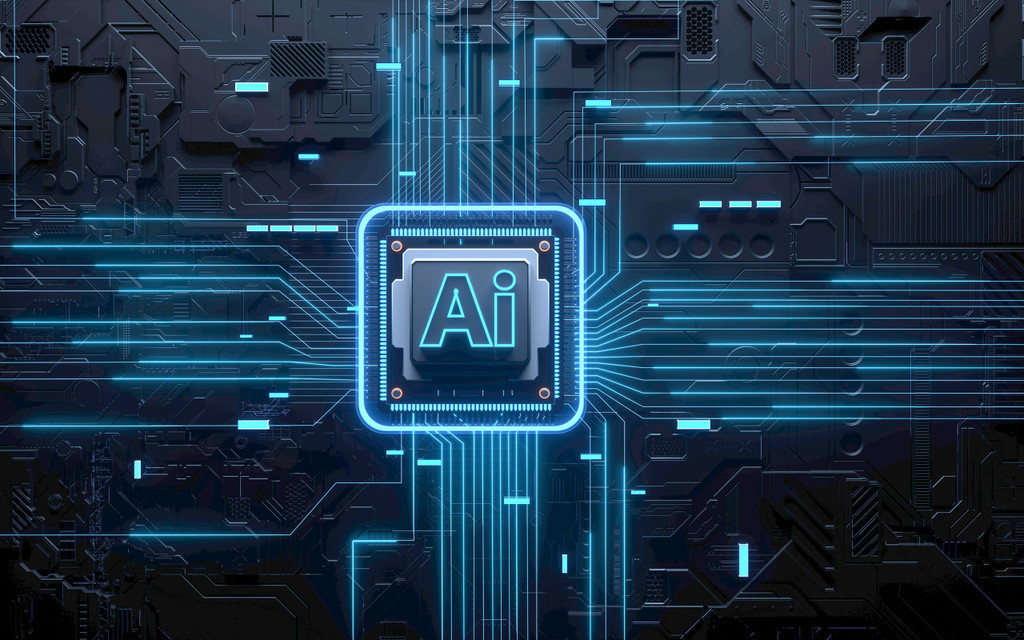26 million people watch, the truth of cancer: Is there any cause or accident?
Author:Zhanlu CHEERS Time:2022.09.27

Today, a microblog of 260 million people rushed on the hot search, and the girl suddenly checked the brain tumor. At the beginning, I thought it was simply gaining fat, but the cause was ...
Uh, if someone eats less, but the weight is increasing, then be careful.

There is a saying in "Snich's Unfortunate Adventure": "Everyone will die, but few people are willing to accept this fact." If cancer is always a "fate" that people can't escape, there are causes or everything accidental?
The following curve reflects the incidence of cancer in the age of 30 to 75, the latter is about 100 times that of the former; about two of each of the five people will suffer from cancer in a lifetime.

Figure 1 As the age increases, the incidence of cancer has become 100 times
K Source: Kate Baldwin is drawn based on the data of DEGREGORI 2019.
To what extent is cancer caused by bad genes, bad habits or bad luck?
Of course, this is not a pleasant topic, but we will clearly see why cancer is part of our life -driven life. A exactly the same process can bring us luck, but also bring us misfortune to us. of.
Studies have pointed out that a cell in the body is likely to kill us one day.
Cancer occasionally occasionally

The time and cost of DNA sequencing decreased sharply. From each patient 10 years ago, it needed $ 100,000 to less than $ 1,000 today, which greatly promoted genetic analysis of cancer. After the efforts of scientific researchers in different countries and the development of international cooperation, the "maps" of tens of thousands of cancer DNA sequences have been established.
The task of researchers and clinicians is to sort out cancer DNA sequences to discover driving mutations. The state of each driver gene is evaluated by checking the integrity of its sequence. By analyzing the sequence of many cancers, some driving mutations and certain cancers show a specific relationship.
For example, certain types of leukemia is almost always related to mutations of a specific driving gene, as well as colorectal cancer and children's retinoplastia female celloma. Other drivers appear in a large part of cancer, indicating that they have promoted the formation of cancer to some extent. Generally, there are more than one driver mutation. Most tumors have 2 to 8 drivers mutations. They usually have both accelerators and stuck shells and brakes.
A variety of driving gene mutations have strongly proved that cancer is usually a process of stimulation. But this is not the only information we can collect from the cancer genome. Drive mutations are not the only mutations in any specific cancer. In fact, they are usually only a very small number of mutations.
Figure 2 depicts the total number of mutations found from the most commonly rare and the most common cancers.

Figure 2 Different cancers contain different quantitative mutations
K Data source: Kate Baldwin draws in 2013 according to Vogelstein et al.
Generally speaking, the number of silences in cancer ranging from less than 10 to more than 200. Most mutations occur outside the drive gene, showing a large random distribution characteristics, and it has nothing to do with the formation of cancer. These mutations are called "passenger" mutations because they are only accompanied by cancer. It was found that the number of passengers mutations was critical to the formation of cancer.
We start to look at this picture from the left. Please note that the number of mutations in children's tumors is the least of all cancers. The average mutation of most adult physical tumors is generally 15-75, and there are more than 125 mutations in several tumors.
Before I explain it down, please take a look at the tumor type at the bottom of Figure 2. Take time to think about why some tumors fall there.
Let us make some specific comparisons now.
Let us start with the mode of adults and children. Why do adult tumors carry more passenger mutations? The simplest explanation is that the cancer that occurs in adult cells has experienced more rounds of DNA replication than cancers that occur in children, so more mutations have been accumulated.
But what are the differences between adult cancer? Look at the two ends of the range of adult tumors. We discovered the mutation of lung cancer at each end, but the number of mutations in people who never smoke was less than 15. The number of cigarettes has 10 times the number of tumors who do not smoke -in the two different types of lung cancer called small cell carcinoma and non -small cell carcinoma. How can we explain this difference?

Cigarette smoke contains dozens of chemicals, which can change or destroy DNA. Compared with smoking people without smoking, the average number of passengers mutations in lung cancer shows that smoking increases the frequency of mutations. In fact, lung cancer contains more mutations than all other cancers, with only one exception (see Figure 2).
The identity of this cancer is also very inspiring: melanoma. Skin cancer is related to more sunlight. Skin cancer is mostly on white people living under the condition of sunshine, such as South Africa, Australia, and Arizona. The sun will generate ultraviolet radiation, and ultraviolet rays are confirmed to cause damage and mutations in DNA. Therefore, a large number of passenger mutations in melanoma reflect that, like the lung cells of smokers, the probability of long -term contact with mutations in these cells is much greater.
In fact, we can now quickly analyze the DNA of a single cell. Researchers have used this technology to see if they can detect drive mutations in normal tissue to track early local incidents formed by cancer. Watching the British research team analyzed the normal skin tissue of the eyelids undergoing plastic surgery, and found that these cells contained a large number of mutations, of which about 1/4 of the cells had a potential driving mutation. A large number of mutations in lung cancer, melanoma, and even normal skin tissue are powerful evidence of smoking and sunlight to increase the risk of cancer. The mutation occurs randomly in the entire genome, but the more mutations occur in the cell DNA, the greater the probability of a driving gene being hit, and then the second drive gene, and so on.
A special type of driver mutation also vividly illustrates the relationship between the number of mutations and the possibility of cancer. Some cancers include a large amount of mutations (500-1500), and the right -handed cancers in Figure 2 belong to this. It was found that these tumors were mutated on genes encoding protein, and these proteins were responsible for detecting and repairing DNA damage. Therefore, the overall mutation rate of these tumors is much higher, and they are more likely to obtain additional driving mutations.
Now we can understand why the risk of cancer will increase with age: the more division of cell experience, the more mutations accumulated. But cancer occurs accidentally, not inevitable. This is where a DNA random mutation occurs. Most cells do not have driving mutations.
Fight with accidents
What do these new knowledge tell us about the cause of cancer?

Well, it depends on who you ask. Genetics will say that driving mutations can cause cancer, which is a fact, but this is not necessarily helpful for how we live and how to take care of our loved ones. The question of more correlation and urgency is, what caused these driving mutations? I want to answer this question in three parts.
The first part of the answer comes from the child tumor displayed in Figure 2. They carry a small amount of mutations that stimulate the drive gene.
The cause of this mutation has nothing to do with lifestyle. They are just the result of terrible doom. Fortunately, this situation is relatively rare. The only thing you can do for these children is to make them confident that such a result is not caused by anything they do. They have no way to prevent this.
The second part of the answer comes from lung cancer, skin cancer and cervical cancer. These cancers also include bad luck, but obviously people have a way to stay away from the ladder of these cancers. For example, smoking can enlarge the risk of lung cancer in a lifetime by 10 to 20 times. As Kolt Fengnegut said: "The public health authorities have never mentioned the main reason for many Americans to smoke excessive smoking, that is, smoking is a fairly confident and decent way of suicide."
Similarly, more people with skin cancer are diagnosed each year than the total number of people with other cancers, but various studies have found that the use of sunscreen with ultraviolet rays in high -risk people can reduce the incidence of skin cancer. We should all obey the suggestions made by Feng Na Gut's corresponding college graduates: "Use sunscreen! Don't smoke." Similar, most of the cervical cancer, many oral cancer, head and neck cancer are papilloma Virus (HPV) infection, and this virus can basically be prevented by vaccination.

The third part of the answer comes from most adult tumors in Figure 2. The number of mutations in these cancers reflects that mutations are unstoppable and are an inevitable by -product of survival and copying DNA. Although some of them are affected by lifestyle and environmental factors, most adult cancers are mainly because of bad luck, that is, they have encountered a series of unfortunate incidents, but it is also the consequences of good luck of longevity.
But the most important question is that once you have cancer, do you know all this help to fight cancer?
Very good news is that this new knowledge about accidental mutations brings new power and new hope. The big -headed apes shaped by the chaos during the glacier are using this large organs to fight against accidents.
25 years ago, we did not know where to find the driver of most cancer, and even if we knew, we basically could not do it.
But since 1998, scientific researchers have invented a new type of drug that can accurately aim at specific molecules generated by driving mutations.
Today, dozens of drugs can inhibit the growth and diffusion of more than 30 cancers, and more candidate drugs are being studied. Therefore, if the "lightning" strikes, the probability of our survival will become greater.
Recommended reading
How does it shape this world and humans itself? In this book, the evolutionary biologist Sean B. Coroel starts with new discoveries from many fields such as ancient biology, geology, evolutionary biology, genetic science and other fields. Many interesting empirical evidence, show you the power of "accidental".

At the same time, Corol's cocoon clarifying the problem that troubled Darwin's "mutation and natural selection, which one is the real inventor" and helps you clarify the relationship between mutation, natural selection, adaptation, and adaptation, and as well as, as well as, as well as, and adapting, and as well as the relationship between the mutation, adaptation, and the adaptation, and the adaptation, and the adaptation, and the adaptation, and the adaptation, and the adaptation, and the adaptation, and the adaptation, and the adaptation, and The role played in the process of evolution.
- END -
Here is the epitome of the urban ecology. Selection every week (19)

Here is telling the urban ecological story, the fixed animal is wonderful; here is...
Midea forced the two companies to stop the top computing chip to China, China: "Science and Technology hegemonism"!

[Global Times Comprehensive Report] The US approach is a typical 'science and tech...